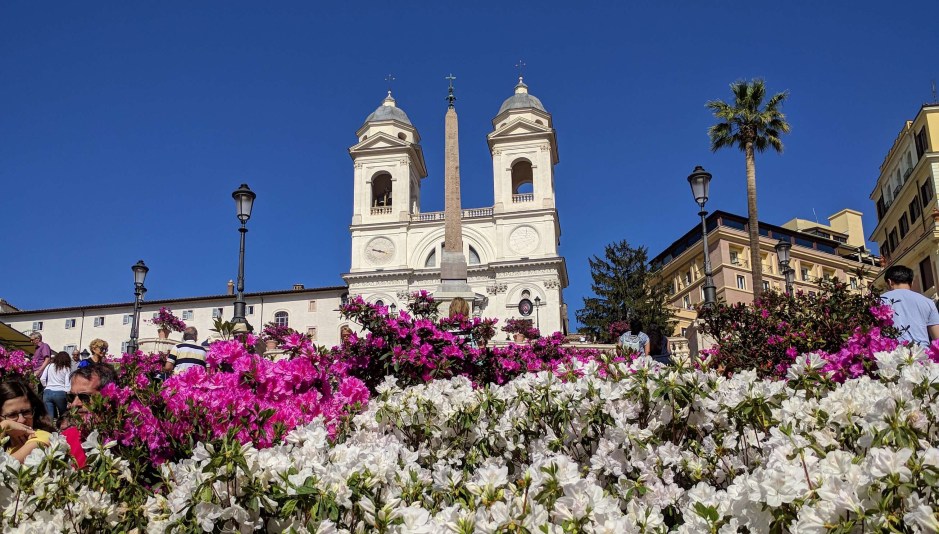4 minutes read
Immerse yourself in the diverse historic layers of Rome, from Renaissance to contemporary, hazarding in the streets. This excursion is a storybook where iconic places like the Pantheon, Trevi fountains, and the Spanish steps, infused with Italian heritage, will tell a fantastic story about the city. Follow my steps for a pleasant walking tour to marvel and gaze at la “Vita Italiana”.
A pinch of history
- The Trevi fountain was built in 30 years.
- The Pantheon was used as a fortress and poultry market when Popes resided in Avignon.
- Campo dei Fiori is the only historic square in Rome without a church.
-
Campo de Fiori, the field of flower
The Campo de Fiori was named after the open meadows located in this area during the Middle Ages. In the fifteenth century, the square became a commercial and cultural center housing, for example, a horse market. This lively place housed also executions. At the center of the square, philosopher Giordano Bruno’s statue, accused by the Church of heresy and burnt alive in 1600, testifies of this infamous past.

Since 1869, it is a market place offering a weekly field of vegetables, flowers and local food (meat, fish, cheese, etc.). At night, the Campo de Fiori welcomes an active nightlife.
At first glance, the colorful feast for eyes is really attractive. However, as I looked closer I realized that tourist glues to this place and the market lost its authenticity. Numerous gifts products are offered to tourists and prices go accordingly.
-
Piazza Farnese
The Piazza Farnese is a square located an alley away from El Campo de Fiori. The piazza is surrounded by the impressive Palazzo Farnese and the Covent church of Santa Brigida.

During the 16 century, the Cardinal Alessandro Farnese, future Pope Paul III, commissioned the Palazzo Farnese. Renewed architects succeeded over the years (from 1517 to 1589) to design and to build the residence. Antonio da Sangello the Younger started it, Michelangelo pursued it, and Giacomo Della Porta completed it. This structure is a perfect example of Renaissance architecture.
Did you know? Since 1635, the Palazzo Farnese is home to the French Embassy.
Next to the palace, the Covent church of Santa Brigida is the Swedish National Church.

The square is ornamented with two roman tubs from the 3rd century. The Farnese family relocated these baths of Caracalla, Rome’s second-largest Roman public baths, to decorate their private residence with fountains.
-
Pasquino Statue
The Pasquino Statue (3rd century), at the corner of the Museo di Roma, is probably the 1st talking statue of Rome. Since the sixteen century, this sculpture is the voice of the populace to complain and to speak out anonymously. Political posters and other announcements are still out today.

-
Piazza Navona
The Piazza Navona, built on top of a Dominitian racetrack (around 80 AD), is one of the largest piazzas in Rome. Its centerpiece is three impressive baroque fountains, Fontana Dei Quattro Fiumi, Fontana del Moro and Fontana di Nettuno (Neptune fountain). The most impressive and the most famous one is the Four River Fountain built for the pope by Gian Lorenzo Bernini in 1651. Four figures representing the Nile, Ganges, Danube and Rio de la Plata rivers surround a Roman obelisk.

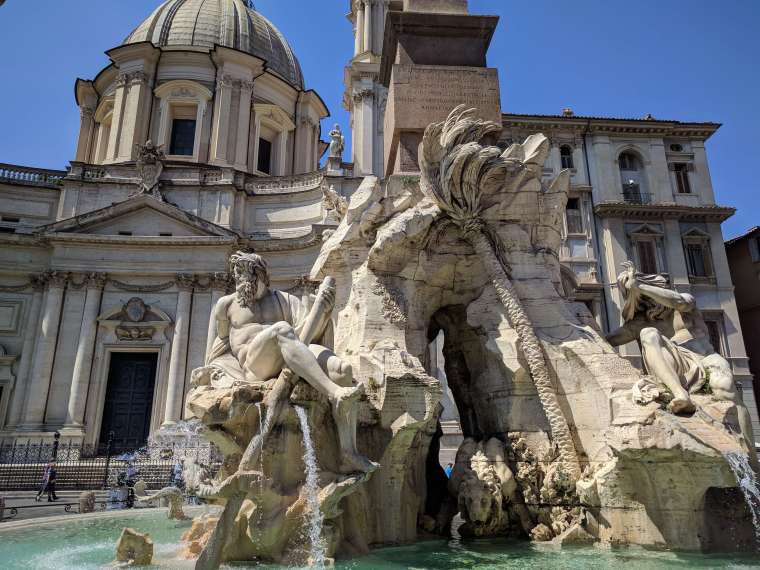
-
Church San Luigi dei Francesi
A few steps from the Piazza Navona is the Church of St Louis of the French. Founded in 1518, this French National church is named after Louis IX, King of France (patron saints of the French nation). Explore it and discover three of Caravaggio‘s renowned paintings of St Matthew: “The Vocation of St. Matthew,” “St. Matthew and the Angel,” and “The Martyrdom of St. Matthew.”
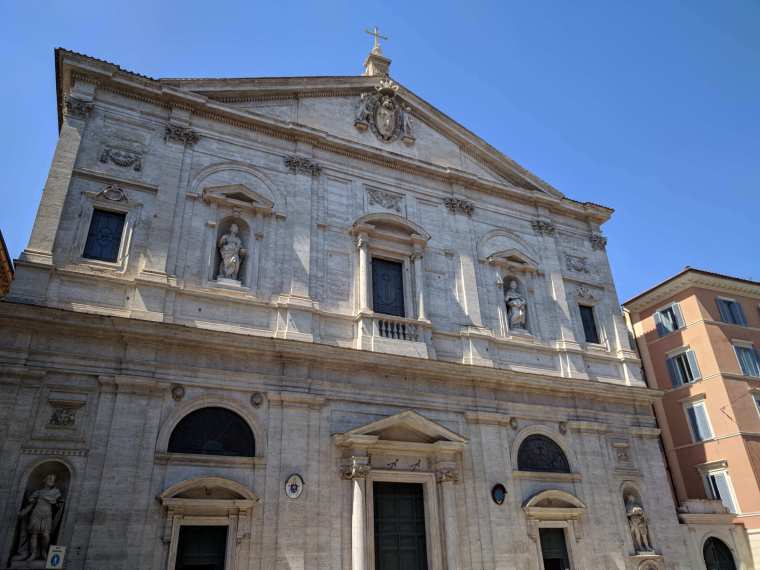
Did you know? The church contains a lot of emblems from the French royalty like the fleur-de-lis and salamander.

-
Pantheon
Admire the masterpiece founded in 27 BC by Marco Vipsanio Agripa. Destroyed then restored, the Roman temple dedicated to all gods was converted into a Christian church in 609.


I was fascinated by this architectural wonder with its “perfect proportions”. The oculus (hole at the top of the dome) provides the only light.

Did you know? Raphael and kings of modern Italy are buried inside the Pantheon
-
Piazza Capranica
As you continue your walk to the Trevi Fountain, admire the early Renaissance style from the Palazzo Capranica. Completed in 1451 for the Capranica family, this palace became the second public theater in Rome in 1678. Next to the palace, is Santa Maria in Aquiro church. Dedicated to Mary, this old church was restored in the 8th century by Pope Gregory III.
-
Piazza Colonna
As you enter the Piazza Colonna, look up at the marble column honoring Emperor Marcus Aurelius for his victory of the Marcomanni Wars (wars against tribes alongside the Danube river: the Germanic Marcomanni and Quadi and the Sarmatian Iazyges).
Following Pope Sixtus V orders in 1589, a statue of St Paul is now atop the monument.
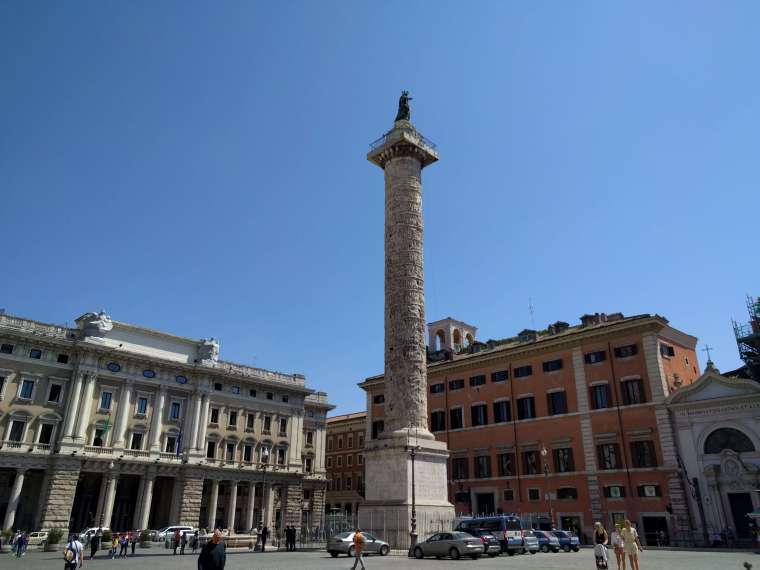
Did you know? The column is standing since AD 193!
-
Palazzo di Montecitorio
The Palazzo di Montecitorio housed the Papal tribunal of justice, then Italy’s first chamber of deputies (since 1871). The palace designed by Bernini is one of the largest libraries in Rome including more than 500,000 books!

The square includes also an Egyptian obelisk from the 6th century BC. It served as a solar clock indicating hours, months, seasons and zodiac signs.

Did you know? There are 13 obelisks from Egypt in Rome. Indeed, Emperors took them as a trophy highlighting Roman power in the region. Later on, Popes crowned them with Christian crosses.
-
Trevi Fountain
As you navigate the small streets, the sound of rushing water will lead you to the Baroque masterpiece. Designed in 1732 by Nicola Salvi, the Trevi fountain celebrates the reopening of several ancient Rome’s aqueducts. At its center, the Greek sea God Oceanus is standing above sea-horses and Tritons.

Don’t forget to toss a coin to guarantee your safe return to Rome 😉
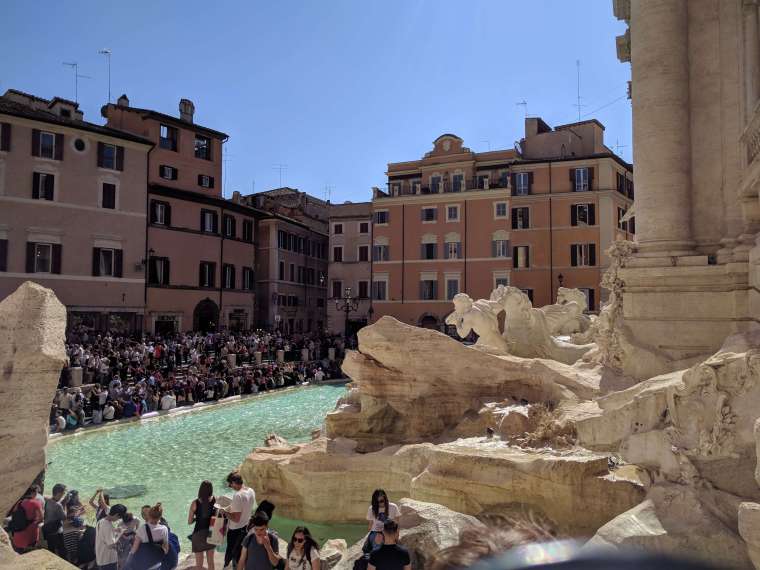
Did you know? Coins tossed (estimated to €3,000 / $2,500 daily) are donated to charity.
-
The column of the immaculate conception
This column, erected in 1857, honors the dogma of the Immaculate Conception established by Pope Pius IX. According to the Catholic Church, Marie was “immaculately conceived” meaning born without sin.

-
Piazza di Spagna: Spanish steps
This walking tour is ending at the Piazza di Spagna, square named after the Spanish embassy to the Vatican for more than 300 years.

The flowering azaleas decorate the 137 steps connecting the French Church Trinita dei Monti to the square. Designed by Francesco de Sanctis, these Spanish steps were completed in 1726.
At the bottom, is standing the Fontana Della Barcaccia. Commissioned by Pope Urban VIII, this sinking boat was built by Bernini or his father Pietro. This square is a popular place gathering a lot of tourists and Roman.


